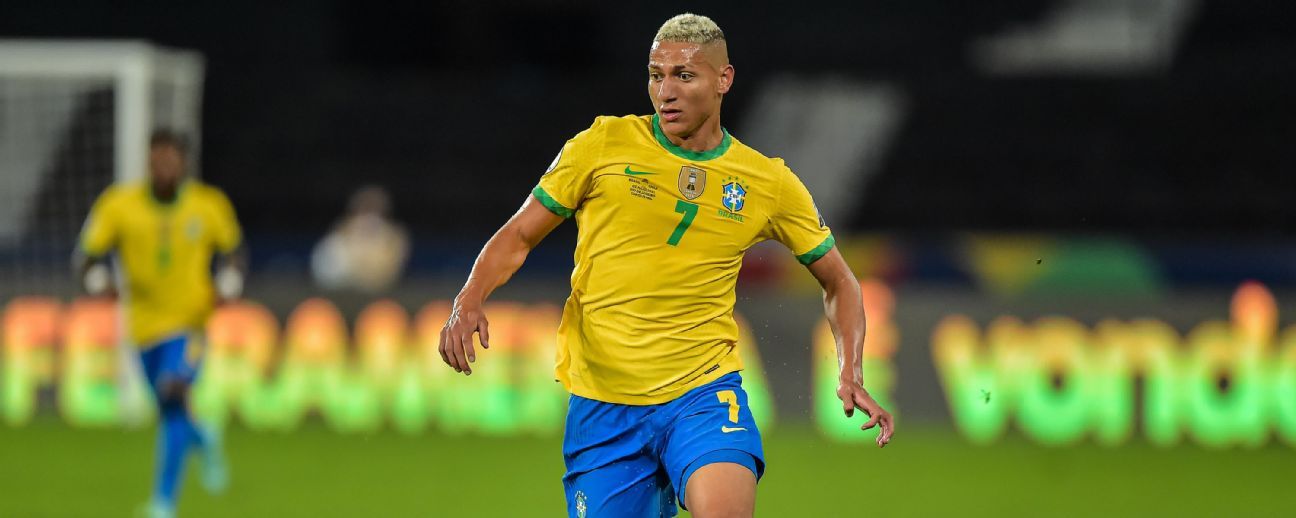The World Cup descends from the Olympic soccer tournament. To be more specific, it is a product of the South American contribution to the Olympic soccer tournament.
In 1924, in Paris, Uruguay wowed everyone present with the genius of its soccer – an elegant new style of play wowed the crowd as unknown players from a small country on the other side of the Atlantic claimed the gold medal. It was the fruit of the rapid advance of South American football, fueled by the birth of the Copa América in 1916, which was played almost every year after its emergence. Four years later, in Amsterdam, Uruguay showed that theirs had not been a coincidence. He won the gold again, and Argentina also traveled and kept the silver.
It was clear. There had to be a world soccer tournament open to everyone – not only to amateurs, as in the Olympics, but also to professionals. And so the World Cup was born, organized and won by Uruguay in 1930, with Argentina in second place again.
All of this gives the Olympic soccer tournament an important place in the culture of South American soccer. It permeates your vocabulary; a goal from a corner kick is “an Olympic goal”, from one of the first meetings between Uruguay and Argentina. And a lap of honor is “an Olympic lap”, because the Uruguayan players did it to greet the public at the Paris Games.
Soccer is what South America does well. Uruguay has never won another gold medal in anything. The only medal in the history of Paraguayan sport is the silver one that he won in soccer in 2004.
The tournament, then, has historical traction and current interest. It is a Sub 23 competition – Sub 24 this time due to the one year delay – in which teams can present up to three older players. So it’s kind of somewhere between the Under 20 and the senior team. It is a tournament to develop players with a title at stake, and both Brazil and Argentina are about to set that goal.
Argentina won gold in 2004 and 2008. Four years later, in London, Mexico surprised Brazil in the final. But Brazil finally managed to complete its trophy cabinet at the Rio 2016 Games, when the penalty of Neymar He beat Brazil in the shootout against Germany, and left the local audience with their best memory of the first Olympic Games held in South America.
Some thought that that gold medal would end Brazil’s obsession with the Olympic tournament. But that doesn’t seem to be the case. For a campaign that begins where the previous one ended – with a meeting with Germany – Brazil has selected a solid squad, with a full quota of older players.
Getting players is quite complicated, and requires delicate negotiations. Since 2008, clubs are not obliged to give up their players for the tournament. There was no way, for example, that Real Madrid was going to give in to Rodrygo, and even a Brazilian club has refused. To his discontent, Flamengo did not allow the forward Peter join the Olympic roster.
3:32
Time trial analysis of what could happen in Tokyo if the number of infections by Covid-19 grows in the Olympic Village.
Even so, there are many figures. The front Richarlison and the midfielder Douglas luiz they went directly from the Copa América to the Olympic team. Y Dani alves, Barcelona’s right-back, would surely have played the Cup had it not been for his injury. At 38 years old, Alves continues to harbor hopes of reaching the next World Cup. The Olympic tournament is a stage to show that you are still up to the challenge.
The other older players are goalkeeper Santos and Sevilla FC central defender, Diego Carlos, who has been biting into the senior national team in recent months – as have midfielders Bruno Guimaraes and Matheus Henrique, who were the heart of the team in the qualifying tournament early last year. The star of the show was Hertha’s front center from Berlin, Matheus Cunha, a tall player who finished as the top scorer of the tournament. The recent Copa América highlighted that this position remains open in the senior team, so their performance will be watched with interest.
Argentina, meanwhile, seems to have focused more on player development than presenting the best possible squad. And the lack of names for Boca Juniors and River Plate suggests that the team has not received the best cooperation from the big clubs, which is not so surprising considering that those called up missed the first knockout round of the Copa Libertadores, the Champions League. from Southamerica.
There is only one older player, goalkeeper Jeremías Ledesma, who is coming off a successful season in Spain with Cádiz. Only one member of the squad has started with the senior team: Alexis MacAllister, Brighton & Hove Albion hitch. And he started only once, in a friendly. Boisterous center forward Adolfo Gaich came on as a substitute for two minutes of a friendly. So there is nothing like the level of experience that the Brazilian squad has.
However, there are many expectations about the Nehuén Pérez and Facundo Medina – position where Argentina needs more depth in the senior team. And many will closely follow central midfielder Martín Payero and subtle hitch Thiago Almada.
The team’s coach is Fernando Batista, younger brother of Sergio Batista, a containment midfielder for the Argentine national team that won the 1986 World Cup. Batista also led the team that won gold in 2008. So Fernando it has a very high bar, and a complicated group with Australia, Egypt and Spain. A repeat of the feat accomplished 13 years ago seems unlikely. Success is probably best measured by how many of these players will be useful to the senior team.

